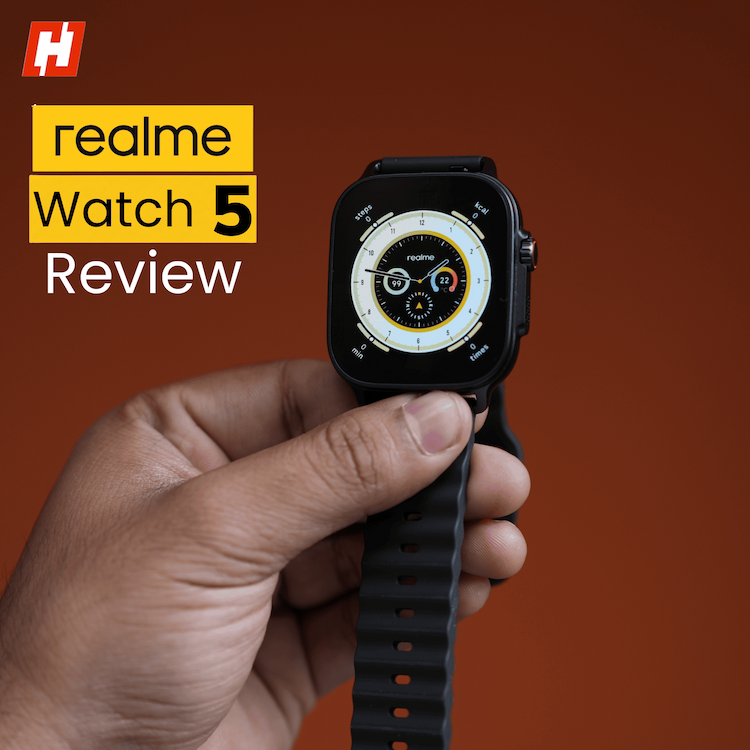Vivo T4 Ultra vs iQOO Neo 10: The glam king takes on the gaming champ

| Key Specs | Vivo T4 Ultra | iQOO Neo 10 |
| Processor | Dimensity 9300+ | Snapdragon 8S Gen 4 |
| Display | 6.67-inch, 1.5K 120Hz AMOLED, | 6.78-inch, 1.5K 144Hz AMOLED, |
| Front Glass | Schott Xensation Alpha |
Schott Xensation Up |
| IP Rating | IP 64 | IP 65 |
| Cameras | 50MP Main +50MP 3X Periscope+8MP UW | 50MP Main+8MP UW |
| Front Camera | 32MP | 32MP |
| Battery & Charging | 5500mAh battery, 90W wired. | 7000mAh battery, 120W wired, Bypass charging |
| Starting Price | ₹37,999 for 8+256GB | ₹31,999 for 8+128GB |
Vivo’s T4 Ultra is easily the flashiest phone of the year—no debate. It’s got that head-turning design that screams attention, but it’s not just here to pose. Underneath all that glam is serious performance and a killer periscope zoom camera.
Then there’s the iQOO Neo 10, Vivo’s power-first sibling that skips the glitz and brings pure performance. It’s fast, focused, and built for gamers and multitaskers. Two phones, same family, totally different energy. One’s dressed to impress, the other’s here to dominate. So which one actually deserves your money? Let’s find out the features and specifications.
Vivo T4 Ultra vs iQOO Neo 10: Design
When it comes to design, the Vivo T4 Ultra is here to make noise—especially in its eye-popping Phoenix Gold finish. It’s loud, dramatic, and clearly wants all eyes on it. Meanwhile, the iQOO Neo 10 plays it cool. The Titanium Chrome variant is sleek, sharp, and way more subtle—definitely a vibe if you’re into clean, minimal looks.
See Also: Realme Buds Air 7 Pro: Price, Features and Specifications
The Neo keeps it flat with straight edges and panels, while the Vivo goes full curvy. Some might find the curves more ergonomic, but honestly, the flat design feels more modern.
On durability, the Neo takes the edge with an IP65 rating and Schott Xensation Up glass. The T4 Ultra isn’t far behind with IP64 protection and the tougher Xensation Alpha on the front.
Both phones have bold camera bumps too. The Vivo continues with its iconic bottle-opener style from the T3 Ultra—complete with triple cams and an Aura Light ring. The Neo 10 borrows a squared-off layout from the iQOO 13, giving it a cleaner, more flagship-like appeal.
Both look great. It just depends if you’re more about subtle flex or full-on bling. Oh, and if gold’s not your thing, there’s a more toned-down Meteor Grey for the T4 Ultra—and a spicy Inferno Red for the Neo.
Vivo T4 Ultra vs iQOO Neo 10: Display
Let’s talk displays—because both the T4 Ultra and iQOO Neo 10 are here to flex.
The Neo 10 rocks a large 6.78-inch 1.5K AMOLED panel, while the T4 Ultra opts for a smaller 6.67-inch AMOLED panel. Both displays are tac sharp, especially with texts and UI.
Design-wise, both phones keep bezels slim, though the T4 Ultra’s are just a tad thicker. Not a dealbreaker, but side by side, you’ll spot it.
Now when it comes to brightness, the Neo 10 straight-up outshines. You’re looking at 2000 nits HBM and a wild 5500 nits peak. The T4 Ultra peaks at 5000 nits, which is still bright—but if you’re out in the sun, the Neo 10 takes the win.
Sure, the T4 Ultra packs in DisplayHDR and HDR10+ support, but in real-world usage, the Neo 10’s panel still feels punchier and more vibrant.
Both phones come with stereo speakers that get reasonably loud, but don’t expect mind-blowing detail or depth. They’re good enough for casual gaming or quick YouTube scrolls, but audiophiles will probably want to plug in some proper gear.
Vivo T4 Ultra vs iQOO Neo 10: Performance
Performance is where things get spicy
The iQOO Neo 10 is clearly gunning for gamers with that Snapdragon 8s Gen 4 chip, paired with up to 16GB LPDDR5X RAM and 512GB of blazing-fast UFS 4.1 storage. It’s a spec sheet that screams power. On the flip side, the Vivo T4 Ultra runs on the MediaTek Dimensity 9300+, with up to 12GB of LPDDR5 RAM and 512GB of UFS 3.1 storage. So yeah, on paper, the Neo 10 should win this round. But real-world use? That’s where things get interesting.
In benchmarks, the Neo 10 did lead, but the gap was surprisingly slim. On AnTuTu, it was just about 9.4% faster. Geekbench showed less than 1% difference in single-core scores and only 4.6% in multi-core. And get this—the T4 Ultra actually came out ahead in 3DMark’s Wild Life Extreme stress test, beating the Neo 10 in loop score and stability. Unexpected, right?
Gaming results? The Neo 10 nailed it with an average of 118.5 fps in BGMI and a perfect 100% smoothness rating. The T4 Ultra, capped at 90 fps, still hit an average of 88.5 fps with 99.7% smoothness. Once BGMI lifts that cap, the T4 Ultra might just surprise us even more.
Thermals were totally manageable—Neo 10 peaked at 39.7°C, while the T4 Ultra ran slightly warmer at 41.9°C. Still, nothing that would ruin your game session.
For everyday stuff like app launches, swiping through menus, and multitasking, both phones feel zippy and fluid. Funtouch OS 15 on Android 15 keeps things clean and responsive. Animations are smooth on both, though the T4 Ultra felt just a tad more refined during transitions.
AI tools are shared too—Photo Enhance, AI Erase, Live Text, Circle to Search—the usual smart goodies. There's some bloatware, but nothing deal-breaking. And with both phones promising 3 years of major updates and 4 years of security patches, you’re sorted on the software front.
Vivo T4 Ultra vs iQOO Neo 10: Cameras
If photography’s your thing, the Vivo T4 Ultra has a clear edge with a more versatile setup. You’re looking at a 50MP main sensor with OIS, an 8MP ultrawide, and a 50MP periscope telephoto lens offering 3X optical zoom. The iQOO Neo 10, in comparison, keeps it basic—just a 50MP main and an 8MP ultrawide, no zoom lens in sight.
In daylight, both phones deliver crisp, vibrant shots with decent dynamic range. But Vivo’s processing feels more polished—details pop better, colours are more accurate, and highlights aren’t blown out. The T4 Ultra also holds its own in low light, offering less noise and deeper shadows, while the Neo 10 struggles a bit more with grain.
Ultrawide? Honestly, it’s mid-tier on both—soft details and colour shifts. Still, the T4’s shots are more usable.
Where Vivo really pulls ahead is in portraits and zoom. Thanks to the 3X periscope lens, you get proper depth, smooth background blur, and the Aura Light softens skin tones without overdoing it—especially in dim settings. You can zoom all the way to 100X, though it’s best under 10X. The Neo 10 caps out at 10X and the results look, well, meh.
See Also: iOS 26 is now official: 10 coolest features you need to know!
Selfies are solid from both 32MP front cams, but Vivo’s feel more polished and punchier.
Video-wise, it’s a close call. Both can shoot 4K at 60fps on front and back cameras with good stabilisation. The Neo 10’s rear cam is slightly smoother, while the T4 Ultra shines more with the front.
Vivo T4 Ultra vs iQOO Neo 10: Battery
When it comes to battery, the iQOO Neo 10 definitely pulls ahead. It’s got a giant 7000mAh dual-cell battery with 120W fast charging, while the Vivo T4 Ultra packs a smaller 5500mAh single-cell with 90W support. I
n day-to-day use, the Neo 10 easily lasts close to two days, while the T4 Ultra taps out around the 36-hour mark—partly because of its higher-resolution display. Charging speeds are solid on both, but the Neo 10 completes a full charge in about 40 minutes, while the T4 takes closer to 50.
iQOO also adds bypass charging, which lets you game while plugged in without stressing the battery. It’s a handy extra for heavy gamers and power users.
Vivo T4 Ultra vs iQOO Neo 10: Verdict
At the end of the day, the iQOO Neo 10 and Vivo T4 Ultra aren’t fighting for the same crowd—they’re built for two very different vibes. The Neo 10 is all about function-first thinking. It’s got the bigger battery, the faster chip, the better thermals, and the kind of raw power that makes it a dream for gamers and heavy users. It doesn’t try to be flashy—it just gets the job done.
The Vivo T4 Ultra, though, is chasing a whole different energy. This one’s for the style-savvy crowd. With that bold design, a standout periscope camera, and a sharper display, it’s got enough flair to turn heads—and the performance to back it up when needed.
So, if you want a phone that works hard and lasts long, the Neo 10 is your guy. But if you want a phone that tries harder—looks good, shoots great, and stands out—the T4 Ultra might just be the better flex.
Trending in Tech

Nothing Phone 3a Community Edition first look & ASMR unboxing: Designed by fans, made for fans

Realme Watch 5 Review: Surprisingly good for the price

Realme P4x Review: Premium vibe, strong battery and dependable performance

